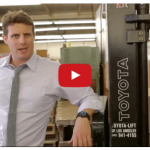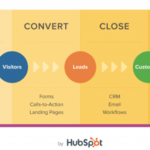How to Prepare for Product Management Interviews
A PM interview is challenging to prepare even for PMs with extensive experience. We look at the process in some detail below and how you need to approach it. We will go through the structure of the process, the types of questions you will be asked as well as some general principles which should help guide you when answering them.
For a more comprehensive guide on PM interviews, more information on the skills needed to be a PM as well as bespoke mentoring programs that will significantly improve your chances of getting that dream product management job be sure to visit myproductmentor.com.
How the Process is Structured
Usually the assessment goes on for 4 to 8 weeks. It consists of:
- Submitting your application
- A phone interview with the HR department or the recruiter
- One or several phone interviews with PMs and/or the hiring manager
- The final interviews onsite, at the company offices

The Interview Process
After you pass the preliminary screening, the next obstacle you will need to overcome is the phone interview with the HR department. You can expect a standard fit interview whose main aim is to determine whether you’d be a good match for the company.
You will most certainly be taken through your resume and you will have to answer some behavioural questions targeted at determining how you approach certain work-related situations.
Once you’ve made it past this stage, the following phone or video interview will be with one of the company’s PMs and will be focused around problems that PMs face on a daily basis.
In the last round of interviews you should expect to be onsite for the entire day, tackling between 3 to 7 interviews.
There may also be the opportunity to have some informal discussions with current members of the company. After this, you will hopefully receive your offer.
What Types of Questions You Will be Asked
Here are the main types of questions you should expect to answer in a PM interview:
- Questions pertaining to strategy (product strategy, estimation)
- Questions pertaining to design (product design, product improvement, favorite product)
- Technical questions
- Analysis questions
- Behavioral questions
In what follows we will focus on general principles that will help you answer these types of questions.

How to Answer PM Interview Questions
PM interview questions can be particularly daunting because they are very broad in nature – not a surprise given that PMs need to direct the roadmap of the product they’re in charge of.
However, if broken down into several steps, they can be very easy to answer.
We recommend you take the following approach:
- Clarify and define the business objective – know precisely what the interviewer is asking you and – together with them – come up with a business objective
- Structure and propose solutions – put together a list of solutions to your problem
- Analyze and discuss these solutions – you should go through the pros and cons of each solution with the interviewer and then decide what you should prioritize
- Give a recommendation to the initial question
Clarify and Define the Business Objective
The number one mistake all candidates make is trying to answer the question immediately, without any kind of plan. Needless to say, such an approach will make you come off as unorganized and will cost you some major points in the interview.
Therefore, the first things you need to do are:
- Make sure the interviewer knows you understand the issue
- Define the business objective
Interviewers are always happy to offer clarifications and answer any questions – keep in mind that questions can often be ambiguous on purpose! Having said that, it is also very important to ask questions in an organized manner as well. This means that you need to ensure that the questions you ask are relevant to the problem at hand.
After you are sure that you’ve understood the question, you need to set a business objective and – if need be – clarify it with the interviewer by asking additional questions.
These questions should bring about a discussion about your main business objective. If the interviewer offers no assistance in choosing one, you should use your knowledge of the company to do it yourself.
Be sure you involve metrics in the discussion in order to do away with any ambiguity about what your potential achievements are.
Structure and Propose Solutions
The same organized approach should be maintained throughout this stage of the interview as well. You will have to:
- Create the structure needed to achieve the objective
- Find with solutions
Remember that this structure is the equivalent of a PM’s roadmap and not the solution. The roadmap will provide definitions for the key areas that you will then discuss with the interviewer.
After the interviewer has agreed to the structure you’re at the halfway point and you only need to venture deeper into the previously identified key areas.
The structure you define will prevent you from getting distracted and sidetracked, therefore you should try to come up with solutions within it. This doesn’t mean you should have no flexibility and you should be ready to explore any direction that the discussion takes you in, extending your framework.

Analyze and Discuss Solutions
At this stage the interviewer might want to focus on the answers you’ve come up with – you’ll need to think about:
- Any trade-offs your solutions present
- Prioritizing your solutions
Show the interviewer that you have a good understanding of the trade-offs that each solution comes with and whether they can be managed or are detrimental overall to the business proposition.
It is crucial that you demonstrate your prioritization skills here most of all. It will be helpful to base your priorities on the opportunities offered by each solution versus the risks you have already tackled.
What solution you go for in the end isn’t particularly important – some degree of personal judgement is expected. However the interviewer is interested in your ability to back solutions up with logical arguments.
Conclude
At this stage you need to:
- Summarize your suggestions
- Make a recommendation
It might be difficult to jump from a detailed analysis to an overall perspective, this is precisely what your interviewer requires you to do. As a PM you will have to deal with execs and even the CEO and they won’t always care about the details of your analysis.
Having said that, the CEO will always be interested in the direction of the product, so you will need to summarize it in order to communicate your strategy and input efficiently. As before, the interviewer will be more interested in how you argue for your final recommendation, rather than what that is.
Key takeaways
You will have to jump through several hoops in order to get that coveted PM job – from screening to that final onsite round of interviews. The best tip to follow in order to be prepared is always have a plan and stay organized in every stage of the interview process as well as always be prepared to back your arguments!
















